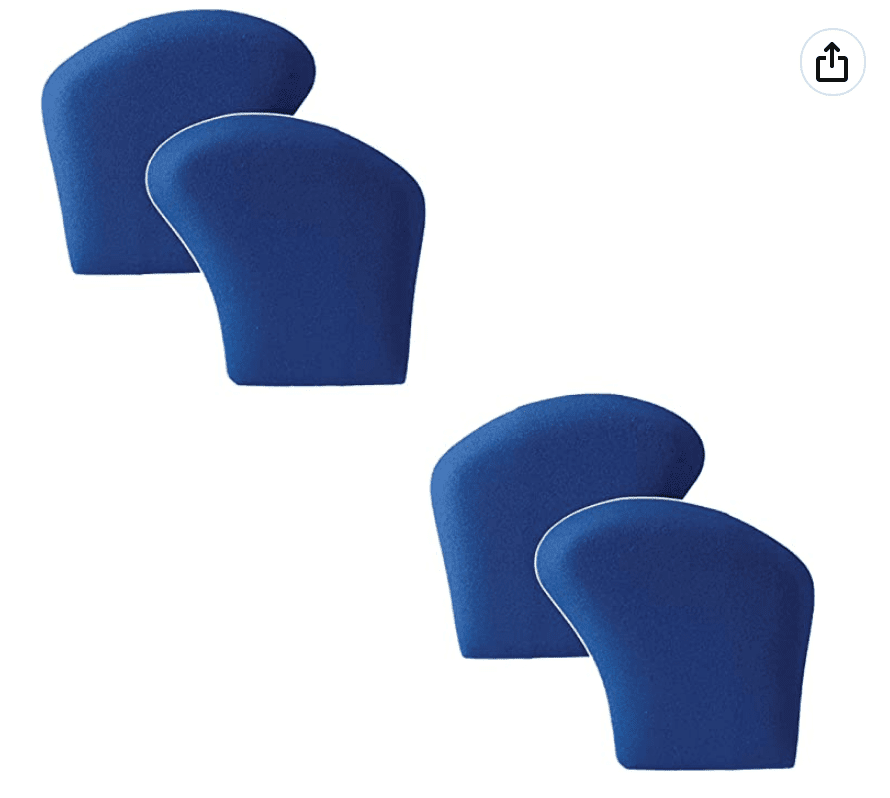Morton’s Neuroma
Read More >
Metatarsal Pads are used with insoles, orthotics, and inserts to provide pain relief for conditions such as Mortons Neuroma and Metatarsalgia. They are normally petal-shaped with the narrowest aspect placed on insoles pointing towards the heel bone.
They are placed under the forefoot either proximally (closer to the ankle) or distally (closed to the toes) depending on their purpose. For conditions like a Morton’s Neuroma where the interdigital nerve between the web spaces of the toes becomes compressed, Metatarsal Pads help by lifting the metatarsal heads to space them and offload the neuroma. This is most commonly placed between the 2nd and 3rd metatarsals and can be a highly effective form of treatment.
Metatarsal Pads help Metatarsalgia which is inflammation and irritation of the metatarsal heads by raising them off the floor and reducing the pressure that goes through them. Placement is important as if they are too close to the site of injury, they can make the symptoms worse.
James McCormack is a Physical Therapist who specializes in Foot & Ankle injuries. james-mccormack.com is a participant in the Amazon Services LLC Associates Program, an affiliate advertising program designed to provide a means for sites to earn advertising fees by advertising and linking to Amazon.com
For Morton’s Neuroma, we generally recommend placing a low profile Metatarsal Pad inline with the site of pain i.e. the highest point of the Metatarsal Pad directly between the 2nd and 3rd metatarsals and slightly proximal to the site of pain. If this is unsuccessful you can try moving the Metatarsal Pad distally or you can try to higher-profile Metatarsal Pad.
For Metatarsalgia, we recommend a similar placement, slightly behind the site of pain and in line with it. We would recommend trying a higher profile Metatarsal Pad rather than moving it distally, as placing it under the site of pain usually makes symptoms worse whereas it can be tolerated for a Morton’s Neuroma. If this is unsuccessful, a metatarsal bar can be considered.

These gel metatarsal pads are commonly used when wearing high heels. Their gel composition adds an extra element of comfort under the forefoot.
We recommend them for heeled shoes as they are soft, transparent, and comfortable. They may not be as effective as other metatarsal pads as a result but firmer metatarsal pads are often too painful to wear in heals.
These are soft and made of gel which allows for extra comfort. Using them inside a sleeve allows you to transfer them easily between footwear and it means they stay in the same place consistently.
The sleeves fit well in heeled and laced shoes while their non-slip surface means you don’t have to constantly worry if the metatarsal pads have moved.
Buy Now

These are an excellent solution for sports footwear. They are bigger than typical gel, transparent metatarsal pads and they have an adhesive backing to hold them in place on your sports insert.
We recommend these for sports trainers but also for work boots and cycling shoes.
Buy NowThis is not medical advice. We recommend a consultation with a medical professional such as James McCormack. He offers Online Physiotherapy Appointments for £45.
Related Article: Morton’s Neuroma Insoles
Are Metatarsal Pads uncomfortable?
If metatarsal pads are placed in the wrong position or they are too large or high they can be painful and uncomfortable. It is important to have the correct diagnosis before using them and moving them more proximal from the foot can make them more comfortable.